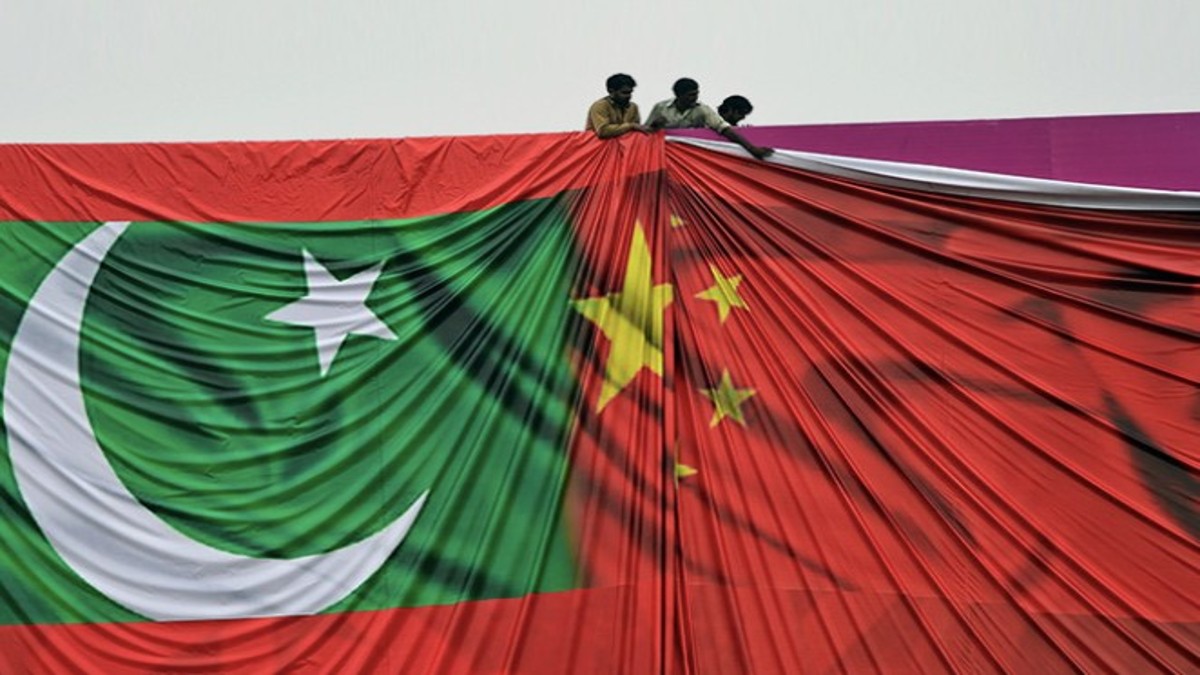Pakistani Finance Minister Muhammad Aurangzeb presented the country’s budget in the National Assembly on Wednesday. This marked the first budget of the Pakistan Muslim League (Nawaz) (PML-N) and Pakistan Peoples Party (PPP) coalition government after the February 8 general elections. The budget has allocated Pakistani rupees 2.122 trillion (approximately $7.6 billion) to defence for the fiscal year 2024-25, a nearly 15 per cent increase from the previous financial year.
Pakistan’s increased defence budget may be good news for China, its top arms trade partner. We explain why.
An overview of Pakistan’s defence budget
Pakistan’s defence budget has been divided into two parts: defence administration and defence services. The defence services section has several key components:
Employees related expenses encompass costs associated with personnel within the defence sector. This includes salaries, wages, pensions, allowances, and other benefits provided to both military and civilian staff. A total of PKR 815,186 has be allotted for this.
Operating expenses cover the day-to-day costs necessary for running defence services. This category likely includes utilities, fuel, maintenance of equipment, supplies, training costs, and other recurrent expenses. For this, PKR 513,328 has been allotted.
Investments in physical assets involve expenditures on tangible items like military hardware such as buildings, aircraft, ships, tanks, and weapons systems. This is part of the budget most closely linked with China. A total of PKR 528,612 is earmarked for investment in these assets.
Impact Shorts
More ShortsCivil works pertain to construction and infrastructure projects within the defence sector. This includes building and maintaining military bases, airfields, docks, roads, and other essential facilities. PKR 244,874 has been allotted in the Pakistani defence budget for civil works.
How China benefits from an increase in Pakistani defence budget
The increase in Pakistan’s defence budget is particularly advantageous for China, given the robust defence relationship between the two countries. Islamabad and Beijing’s cooperation encompasses extensive arms trade that is overwhelmingly in China’s favour.
According to a report by Stockholm International Peace Research Institute (SIPRI), Pakistan is the fifth-largest arms importer in the world. From 2019-23, 82 per cent of its arms imports came from China.
In the same period, China was responsible for 5.8 per cent of all arms exports in the world. Islamabad received 61 per cent of these weapons.
China has been a significant supplier of military equipment to Pakistan, including aircraft, submarines, tanks, and missiles. The two countries have engaged in joint ventures for the production of military equipment, such as the JF-17 Thunder fighter aircraft, designed specifically for Pakistan. This aircraft can carry various Chinese air-to-air missiles, including the formidable PL-15.
Pakistan is one of the largest recipients of Chinese arms. From 2019-23, Islamabad received 61 per cent of all Chinese arms exports. In the same period, arms imports by Pakistan grew by 43%, with 82% of these imports coming from China.
Equipment supplied by China
Air Force: The Chinese-developed JF-17 Thunder multirole combat aircraft and the F-7, designed for short-range air-to-air combat, form significant parts of Pakistan’s fighter fleet. Chinese HQ-9/P air defence system and CH-4 reconnaissance-cum-strike drones are a part of Pakistan’s air defence and surveillance capabilities.
Army: China provides a substantial portion of Pakistan’s offensive armour and support units, including artillery and rocket launchers. Despite China’s smaller contribution to infantry vehicles and aviation units, the support for artillery and rocket launchers is crucial for fire missions.
Navy: China assists in the production and upgrading of naval assets, including submarines and surface vessels. The strategic partnership includes the construction of Chinese-designed ships and submarines in Pakistan’s shipyards, boosting local defence manufacturing capabilities.
Economic and strategic benefits for China
Clearly, the defence trade between Pakistan and China generates significant revenue for Chinese defence manufacturers. Continued military collaboration ensures a steady flow of Chinese military hardware into Pakistan, fostering long-term economic ties.
China’s support bolsters Pakistan’s military capabilities, ensuring a strategic ally in South Asia, where India is building its influence. Fro Beijing, Pakistani military capabilities are aimed at helping counterbalance New Delhi’s regional dominance, indirectly supporting Chinese interests in the region.
Pakistan’s increased defence budget is a strategic boon for China, reinforcing the deep-seated military collaboration between the two nations.
)